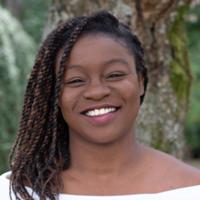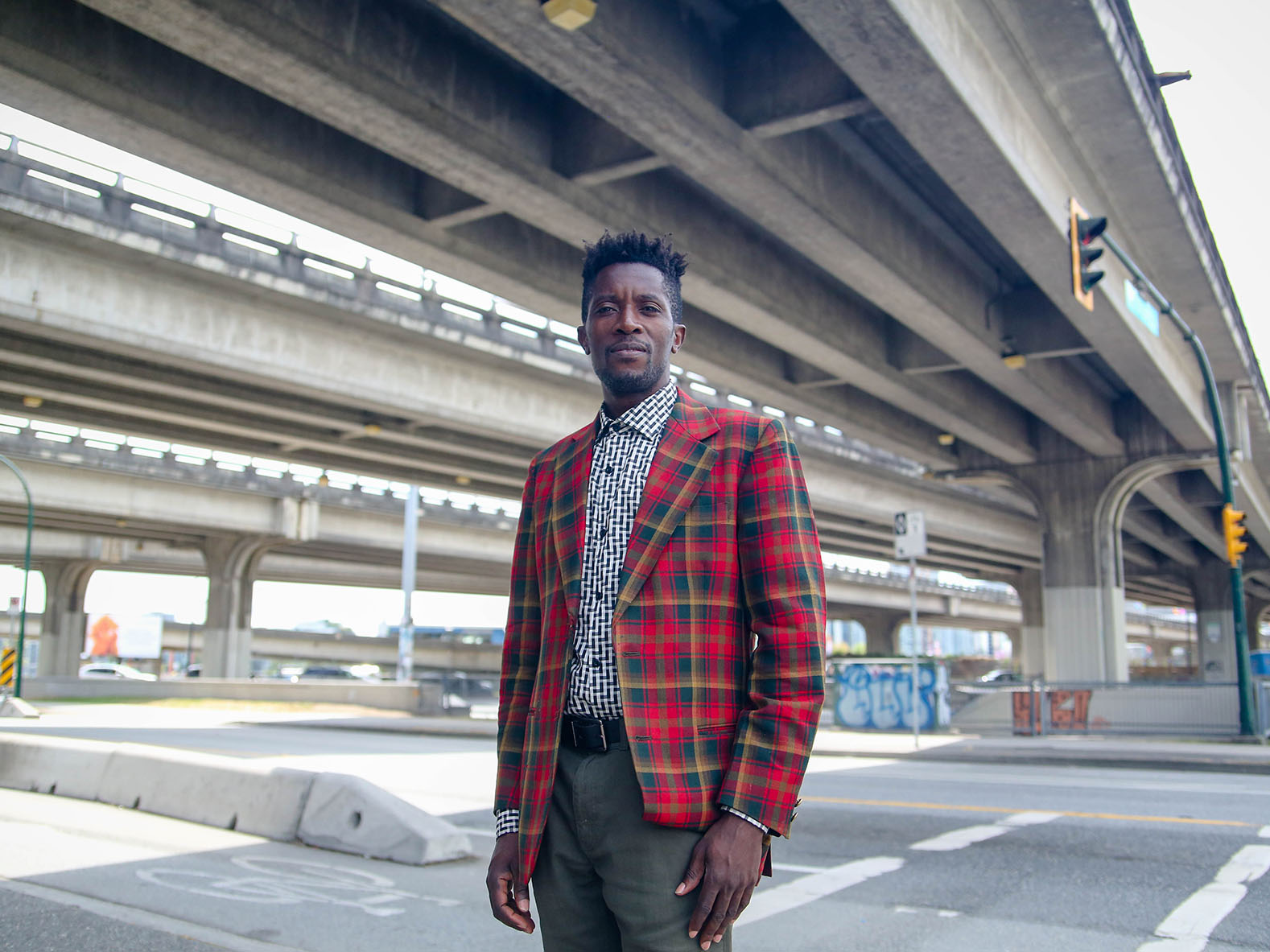“Hi. Excuse me.”
As I sat on a blanket on Second Beach watching the sunset, two complete strangers were trying desperately to grab my attention.
One was a Black woman, a little over five feet with long black hair and sunglasses that covered half her face. The other was a white man, around the same height and with reading glasses that rivalled the size of hers.
I was a bit weary. She approached me on what felt like one of the hottest days of 2014, and all I could think was, “Out of all the people on this beach, why me?”
“We’re visiting from Seattle,” she told me. “And we were just wondering…”
There was an acute pause. The kind you hear when you’re not sure how to phrase a question, and you’re worried about how you’ll be perceived afterwards.
“We were just wondering,” she repeated. And with a deep breath, she finished her question. “Where are all the Black people?”
My eyes widened as I sat there in silence. For a second, I looked around. I realized that she and I were the only Black people on this beach.
Ah.
“We just want to know if there are any Black neighbourhoods in Vancouver where there’s a community,” she explained. “You know, like how the Chinese have Richmond and South Asians have Surrey.”
For the record, what this woman was trying to describe is an ethnic minority enclave, a geographic area with a high concentration of a minority group. In this case, she wanted to know if there were any Black ethnic enclaves in the region.
As an Afro-Caribbean immigrant living in Vancouver, it’s obvious to me that the Black diaspora doesn’t have a physical space to call its own. It wasn’t always this way. Many residents are familiar with Hogan’s Alley, a Black community in southwestern Strathcona that existed between the early 1900s until 1970.
But Hogan’s Alley was not the only vibrant Black community to ever exist in Vancouver. It was just the most recent to disperse.
“The history of people of African descent in British Columbia started way back in 1858,” says Yasin Kiraga Misago, founder and director of the African Descent Festival. “The same year that Sir James Douglas made the call to invite people of African descent to come to British Columbia.”
Douglas was the governor of Vancouver Island at the time and a biracial person of African descent. Approximately 800 Black people from the United States answered his call and made the trek here. At the time, Black people in America were not considered citizens, and so they travelled northward to pursue a better life, eventually settling in Victoria and on Salt Spring Island.*
Other early Black settlers, namely Josephine Sullivan, Joe Fortes and Jack Johnson formed even smaller communities in downtown Vancouver and North Vancouver. By all accounts, there were at least three or more small yet vibrant Black communities before Hogan’s Alley, across Metro Vancouver and the Gulf Islands.
But as quickly as these communities were formed, they dispersed. And as quickly as they dispersed, so did detailed historical accounts of their presence and contribution to B.C. and Vancouver.
Why did they keep moving, and what were they searching for?
Headed west, but not for long
The answer to that question consists of two parts. First, they were chasing opportunity. Second, they were trying to escape racism.
When Douglas invited Black people from the U.S. to B.C., he did so with the promise of land and voting rights.
However, after Black settlers formed their own local militia in Victoria, they were barred from marching in welcoming ceremonies. Black settlers on the Island would soon move to Hogan’s Alley in Vancouver and elsewhere, only to encounter similar experiences.*
Eventually, they were driven out of the area due to “slum clearance” policies that saw them displaced, over years, in the name of “urban renewal.”
“At that time, the city of Vancouver passed a resolution at city hall, that the police should remove all undesirables,” Misago said of Hogan’s Alley. In this case, “the negroes.”
In the early 1900s, proposed immigration laws and practices prevented “undesirables” from entering Canada for over 50 years.
In many ways, B.C.’s Black history often feels absent, says Adam Rudder, a Black Vancouverite and a co-chair of the Hogan’s Alley Society.
Rudder grew up noting the lack of Black culture in the community, schools and media. The observation eventually led him to write a thesis on Hogan’s Alley and Black Vancouver’s history of invisibility.
“There was just so much racism towards groups,” Rudder said. “And when they started to take on any sort of position of prominence within the city, they quickly became targets.”
There are a few notable incidents that stand out in Rudder’s mind. He described one in the 1860s where two members of the Black community were at a theatre in Victoria. They sat in the section that was reserved for what Rudder described as “the more well-off members of the community.”
One man threw flour at them “... to make them appear whiter,” Rudder said, and a commotion broke out.*
Years later, after the Emancipation Proclamation was declared in the U.S., many Black Salt Spring residents returned there.
“I found a few documents from people at that time who were like: ‘We’d rather be in the States where there’s an established Black community,’” Rudder said.
Those documents described how persons felt they could better endure racism in a larger, less isolated community.
‘A place of protective identity’
Today, many Black Vancouver residents believe the dispersion of Black people in the region continues. Rudder has met others who view cities like Toronto as far more attractive destinations for Black people.
Why?
“People who feel they experience greater discrimination in society may feel that an enclave is a place of calm and a place of protective identity,” said Dan Hiebert, a geography professor at the University of British Columbia.
Simply, vulnerable minorities see enclaves as safe areas where they can continue to feel a sense of support and community.
“And there are certainly those who would argue that discrimination is more evident for that population,” Hiebert continued.
In Metro Toronto, where the Black population is four per cent higher than the national average of 3.5 per cent, there are several Black enclaves people voluntarily gravitate towards.
Metro Vancouver is no different. Nowadays, Black people in Vancouver do gravitate towards certain areas of the suburbs, but one could hardly describe them as enclaves.
Between 2006 and 2016, Vancouver saw a 44-per-cent increase in Black visible minorities from 20,670 to 29,830, the highest concentrations of which centre around census tracts in the cities of northern and southern Surrey and Burnaby.
(Note: Maps best viewed on a horizontal screen.)
According to the 2016 census, the tract in Surrey bordered by 96 Avenue, 100 Avenue, King George Boulevard and 140 Street contained the highest Black population. This tract, where more than 400 Black people lived in 2016, encompasses King George Station and is only a few metres away from Surrey Central, a hospital, schools and shopping centres. Total population is almost 9,000.
Another tract in Burnaby, located between Edmonds Street, Kingsway, Canada Way and Tenth Avenue, had the largest number of Black people in 2011. In 2016, it had the second-highest number of Black people at 360, out of a total population of 4,650. It’s also in close proximity to Edmonds SkyTrain, allowing an easy commute.
The median income of residents in both tracts was $28,507 and $23,936 respectively, less than the annual living wage. Residing close to transit is a natural option for those who cannot afford cars.
Housing was on the cheaper side in these areas, with average rental prices of $1,035 and $1,090 in 2016. Moreover, these areas have seen rapid housing expansion in recent years. They also have high percentages of immigrants, demonstrating that minorities continue to flock to areas where they feel most represented.
However, the Black residents make up less than 10 per cent of the population in both census tracts. That’s not exactly what anyone would consider a “high concentration,” especially since the Black population is not the primary or secondary ethnic group in those tracts.
“I wouldn’t necessarily expect there to be Black enclaves in Vancouver,” Hiebert said. “First of all, smaller numbers. Secondly, a very fragmented population in terms of religion, language and national origin.”
Recently, the Hogan’s Alley Society announced the Metro Vancouver Regional District Black Experience Project. It aims to quantitatively and quantitatively explore challenges to integration within Vancouver for the Black diaspora and determine its corresponding needs.
In the meantime, the region’s small, yet visible Black clusters will continue to dissolve, realign, consolidate, shift and repeat. With continued migration into and out of B.C., there’s no telling what those areas might look like in the next 10, 15 or 20 years.
*Story corrected Aug. 13, 2019 at 12 p.m. ![]()
















Tyee Commenting Guidelines
Comments that violate guidelines risk being deleted, and violations may result in a temporary or permanent user ban. Maintain the spirit of good conversation to stay in the discussion.
*Please note The Tyee is not a forum for spreading misinformation about COVID-19, denying its existence or minimizing its risk to public health.
Do:
Do not: